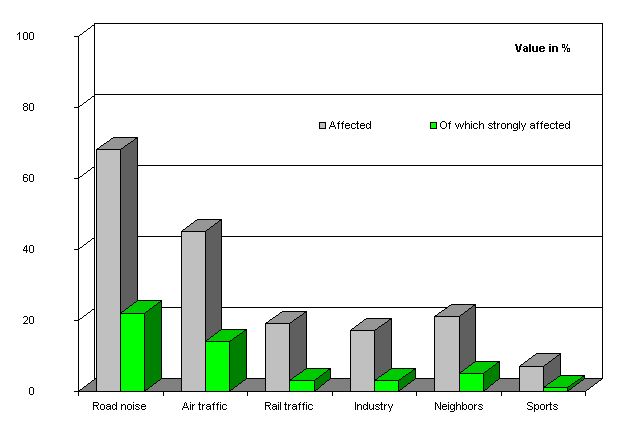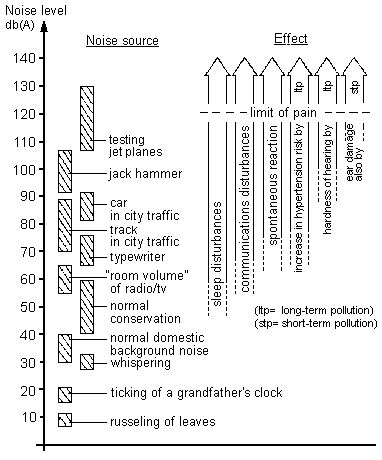The background noise in major German cities today is determined predominantly by traffic noise. Accordingly, when surveyed on noise pollution from different noise sources, German citizens frequently identify street noise as the primary irritant.
Pollution due to noise in residential and work areas is extreme. However, even during free time, when people want to recuperate, noise harms their well-being. Many parks and meadows, but also large parts of the urban recreational areas are so noise-polluted that their usefulness for peaceful recreation is greatly limited.
In recent years, the driving noise caused by individually-owned motor vehicles has of course receded slightly due to technical innovations; however, due to the increasing numbers and greater speed of cars, the total noise level has climbed.
In addition to the noise of motor vehicles, railways and airplanes, noise pollution also occurs due to industry, trade and building activity. In addition, there is neighborhood noise (i.e., noise from household appliances, musical instruments and lawn mowers, etc.) as well as noise from sports and other leisure activities and events. The intensity of the annoyance from the different noise sources was investigated by the Federal Environmental Agency (cf. Fig. 1).



